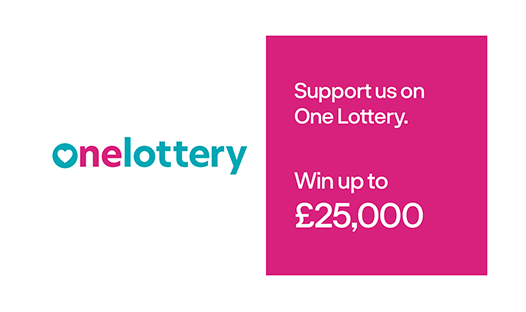an artical on SPG
#1
Wed, 06/05/2015 - 06:50
an artical on SPG
http://www.medscape.com/viewarticle/844217
I wonder if you could get if you clusters vary from left and right?
What I noticed in my odd circumstances a background headache can sometimes go if using a electric toothbrush, no good though on a full cluster.
Login to add comments







Link takes you to a login page. :-/. Was looking forward to reading about this as its one of the things my neuro said was a possible treatment for my sunct
It's a password only website...If you copy Hope for 'Suicide Headache' into google then you should find the article.
John
its not password protected on my laptop do not know why it is on yours. I have cut and pated the content below
WASHINGTON, DC — A minimally invasive, implantable investigational device that facilitates on-demand patient treatment may help ease the crippling pain and significant psychosocial burden of so-called suicide headaches.
A study examining the long-term safety and efficacy of sphenopalatine ganglion (SPG) stimulation in relieving acute cluster headache pain showed that two thirds of more than 5000 cluster headache (CH) attacks evaluated during long-term follow-up were effectively treated.
The study was presented here at the American Academy of Neurology (AAN) 67th Annual Meeting by lead investigator Jose Miguel Láinez, MD, PhD, Catholic University of Valencia in Spain.
Severe Pain
A highly disabling chronic condition, CH is characterized by intense stabbing pain in the area of one eye and is often accompanied by swelling, tears, and nasal congestion. Attacks occur multiple times per day and last between 15 and 180 minutes.
Often called "suicide headache," CH pain is recognized as among the most severe known to humans, said Dr. Láinez, noting that 15% to 22% of patients have suicidal ideation.
Prevalence estimates of CH are similar to those of Parkinson's disease and multiple sclerosis and affect approximately 375,000 individuals in the United States.
Part of the autonomic nervous system, the SPG is a nerve bundle located behind the nose and is directly involved in the generation of cluster headache pain.
While it has been a treatment target for CH for more than a century, Dr Láinez noted that the benefits of prior SPG interventions are often transient and sometimes destructive and that long-term relief requires repeat procedures. This highlights the need for new treatment options.
The ATI Neurostimulation System used by the researchers in the study is a minimally invasive technique. The device, which is smaller than an almond, is inserted through a small incision in the upper gum and positioned at the SPG nerve bundle on the same side as the patient's headache pain. It leaves no visible scars and can be reversed and adjusted to control CH pain.
After implantation, patients can treat their pain on-demand by placing a handheld remote control on the cheek over top of the ATI Neurostimulator.
Approved for use in Europe, the device has been shown to be safe and effective.
In early 2013 the investigators published results of the randomized, controlled, blinded prospective multicenter study in Cephalalgia. Known as the Pathway CH-1 study, it showed that SPG stimulation using the ATI Neurostimulation System was effective in patients with chronic CH, relieving acute pain and preventing CH attacks.
In the current analysis, investigators examined acute response to SPG stimulation therapy during long-term follow-up, which began 12 to 15 months after insertion of the device.
The interim population analysis evaluated the acute response to SPG in 33 patients with CH enrolled in the long-term follow-up trial and included data on 5132 attacks.
Each attack treated with SPG stimulation therapy was evaluated for effective therapy, which was defined as relief or freedom from moderate, severe, or very severe pain or freedom from mild pain.
The average age of study patients was 41 years; 85% of patients were male. The mean disease duration was 10.5 years, and the mean CH attack frequency at baseline was 17 attacks per week (range, 5 to 70 attacks per week). The average duration of SPG stimulation was 14 minutes (range, 3 to 39 minutes).
The researchers found that SPG stimulation was an effective therapy for 65% (3354) of treated attacks and ineffective therapy in 35%.
Of the treated attacks, 22% were mild, 47% moderate, 22% severe, and 9% very severe. SPG stimulation was effective in 59% of mild attacks, 78% of moderate attacks, 62% of severe attacks, and 21% of very severe attacks.
In addition, he noted, 77% of treated attacks did not require the use of additional acute medication.
The results from this interim analysis, concluded Dr. Láinez, "continue to support the use of on-demand SPG stimulation as a highly effective abortive therapy."
New Treatments Welcome
Commenting on the findings for Medscape Medical News, Mia Minen, MD, director of headache services and assistant professor, New York University Langone Medical Center, New York, said SPG stimulation may offer a novel treatment option for patients with CH.
Dr Minen noted that CHs are notoriously difficult to treat, particularly in patients in whom standard treatments have little or no effect.
"A lot of providers would love to have additional treatment options, and I think headaches specialists are quite excited by the idea of SPG stimulation. When you look at the study results, few patients required abortive medications for their attacks and so to me this shows that SPG stimulation may offer an effective option for these difficult-to-treat headaches," said Dr Minen.
The study was supported by Autonomic Technologies Inc. Dr Láinez and Dr Minen have disclosed no relevant financial relationships.
American Academy of Neurology (AAN) 67th Annual Meeting. Abstract S23.005. Presented April 22, 2015.
Really interesting article. What a great shame the UK government are currently refusing to fund these.
It would be very interesting to find out what they do cost, and then work out how much oxygen and Triptans that equates to. I mean to challenge the establishment with, obviously we all know it is worth funding to relieve suffering and give people their lives back.
Harriet.
harrietjt
I get google alerts on news around the world on clusters and migraines. I was thinking of a new thread where i post the links as they come in so readers can read the latestest articles posted on the web re clusters,
I sometimes worry if the GB debt mountain go out of control and we end up in dire straits like Greece what will happen to our imigran jabs and oxygen. Cancer people are already being restricted on costly meds.
I think that would be a great thread.
And yes, it is a bit scary wondering where all the cut backs could end up.